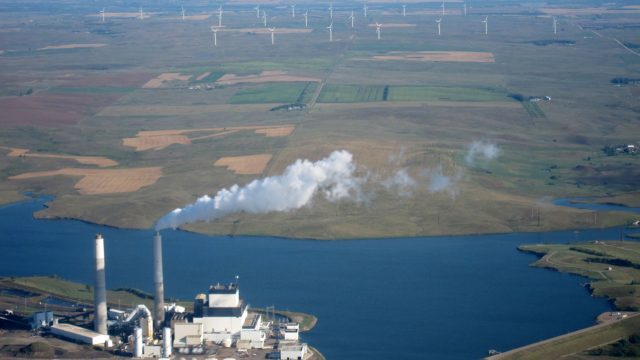Here Are The Issues North Dakota Is Suing Over On The Clean Power Plan

Back in October when the Obama administration’s Clean Power Plan hit the federal register dozens of states joined together to file a lawsuit aiming to block it.
North Dakota, however, filed its own lawsuit. I spoke with Stenehjem at the time about why that was (read my Watchdog article about it), but now the state has officially declared its issues in its action against the feds.
You can read the full document below, filed by Assistant Attorney General Paul Seby who apparently didn’t take that post-Thanksgiving Friday off from work.
Here’s what the state is arguing in a nutshell:
The EPA is mandating the use of technology that’s not commercially available.
The filing states that the EPA is “establishing emission standards…based on a technology or technologies that have not been adequately demonstrated and are not achievable.” When you hear the coal industry talk about this issue, what they say is that the technology the feds want implemented to reduce carbon emissions and hit the mandated reduction goal (over 40 percent for North Dakota) isn’t available. Or, at least, commercially available (more on that next). Meaning something the coal industry can implement without ruinous cost.
The EPA is using Department of Energy-backed projects as proof that the technology exists.
The “EPA has abused the agency’s discretion” by relying on a “demonstration” of carbon reduction that is exclusive to projects backed by the Department of Energy. The EPA has cited the Kemper County Energy Facility in Mississippi as a functioning carbon capture project when it proposed the Clean Power Plan. But that facility was funded by the Department of Energy, and the state is questioning whether the use of this facility as an example violates the Energy Policy Act of 2005, which doesn’t allow setting standards that require carbon capture based only on projects funded by the Energy Department.
The EPA didn’t differentiate between different types of coal.
The Clean Power Plan doesn’t just take into account the carbon emitted when coal is burned to produce power. It also takes into account the carbon emitted when that coal is transported. But that sort of thing varies significantly from region to region. The lignite coal which is mined in North Dakota is very moist, and very heavy, and so isn’t shipped very far. In fact, one unique aspect of coal-fired power generation in North Dakota is that the power plants are typically built right on top of or very near to the coal mines themselves so that the coal isn’t shipped very far. Also, different types of coal burn differently, and so have different impacts on emissions. The state is questioning whether the “EPA abused its discretion by failing to create a separate subcategory for lignite coal in the Final Rule and by failing to recognize regional variability of fuels.”
Is the EPA violating property rights?
The state is questioning “Whether the Final Rule creates an unconstitutional taking of property interests that can be avoided by an interpretation that is more consistent with the plain text of the rule and more consistent with past practice?” Or, put simply, whether the feds are denying the coal industry and landowners the right to the valuable coal under their property by implementing a rule that overreaches the authority of the EPA.
Here’s the full filing.




